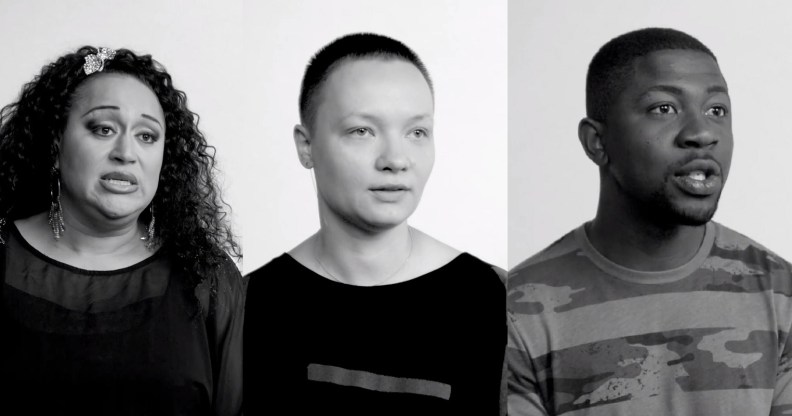LGBT refugees explain why they fled to the US

A group of LGBT+ refugees have explained why they fled to the US.
Over the past year, LGBT+ refugees have faced a two-pronged attack from the Trump administration’s hardline immigration stances and regressive policies on LGBT+ rights.
After fleeing their homes to seek a new life in a more liberal country, refugees are often met with detention and a harsh immigration system.
Three refugees, Alena Sandimirova, Edafe Okporo, and Ishalaa Ortega, spoke out about their experiences in a video for LGBT+ immigration non-profit Immigration Equality.

Alena Sandimirova
Alena Sandimirova, a lesbian who fled Russia to come to the US in 2009, explained: “I filed for asylum because I didn’t feel safe.
“Best case scenario in Russia, I would be living in the closet. You can’t hold hands, you can’t live your life out.
“It’s very dangerous, not just for yourself but for your friends and family.”
She added: “When I got asylum it was amazing. I felt protected, like in the future I will have a place to call home.”
Sandimirova is now a small business owner, working as a metal smith and a jewellery designer.
She said: “As of 2017, I’m a citizen of the United States. Coming here has allowed me to realise my full potential… and saved me from suicide.
“Refugees are some of the strongest people. Not only did they survive the country they came from, but they have the courage to learn the process, to speak up, to pursue.”

Ishalaa Ortega
Ishalaa Ortega, a transgender woman from Mexico, was a prominent spokesperson for LGBT+ rights in her state but was forced to flee the country after she was targeted by anti-LGBT politicians, and faced a wave of death threats.
She crossed the US border in 2013, and was initially sent to a detention facility.
Ortega explained: “It was very painful to be in prison when I was asking, yelling out for help. No-one would respond to me except Immigration Equality. I found this amazing organisation who stand by me through this journey.”
She eventually received her green card in 2018.
Ortega now works at a community health clinic as a case manager for people living with HIV.
She added: “We came to this country to contribute, we came to this country to help others too.”

Edafe Okporo
Edafe Okporo fled his native Nigeria after his high-profile work on LGBT+ issues led to mob violence and he was involved in a brutal beating.
He explained: “I won an award [in 2016] for grassroots advocacy for gay men to have access to healthcare services. Because of my work, it puts me in danger of persecution. That made me flee my country.”
Okporo flew to the US and sought asylum at the airport.
He said: “I told the immigration officer, ‘I fled because my life is in danger,’ and the officer told me I was going to a jail.”
Okporo was detained for five months, but was granted asylum in 2017.
He said: “I’ve been fighting to live freely as a gay man, and I felt like that was the point in my life where the tide turned around. Now I’m the director of a refugee shelter in New York City
“I am excited what will happen in the future, and I’m waiting for the day where I will become a US citizen.”
Immigration Equality Executive Director Aaron C. Morris said: “Immigration Equality’s asylee clients contribute so much to our communities.
“They are teachers, healthcare providers, artists, and activists. We as a nation should continue to embrace refugees and asylum seekers, not turn our backs on them when they need us most.
“This video highlights the dangers LGBTQ asylum seekers face in their countries of origin and shows why defending the asylum system is integral to keeping the United States a beacon of hope for people around the world.”
In the UK, a report in June this year alleged that LGBT+ asylum seekers are being routinely disbelieved by Home Office officials who “often considered claims not credible” based on trivial generalisations about LGBT+ people.

